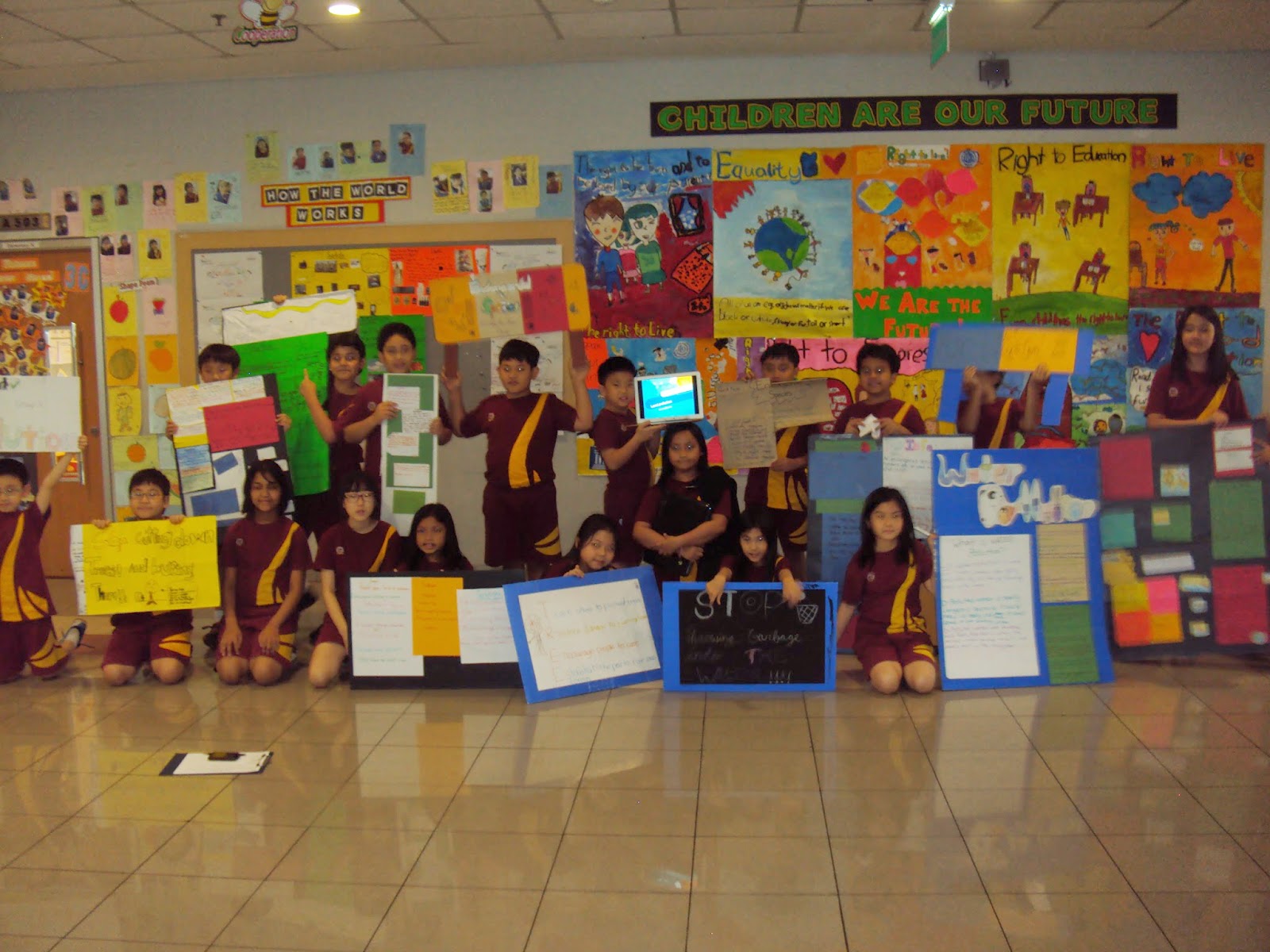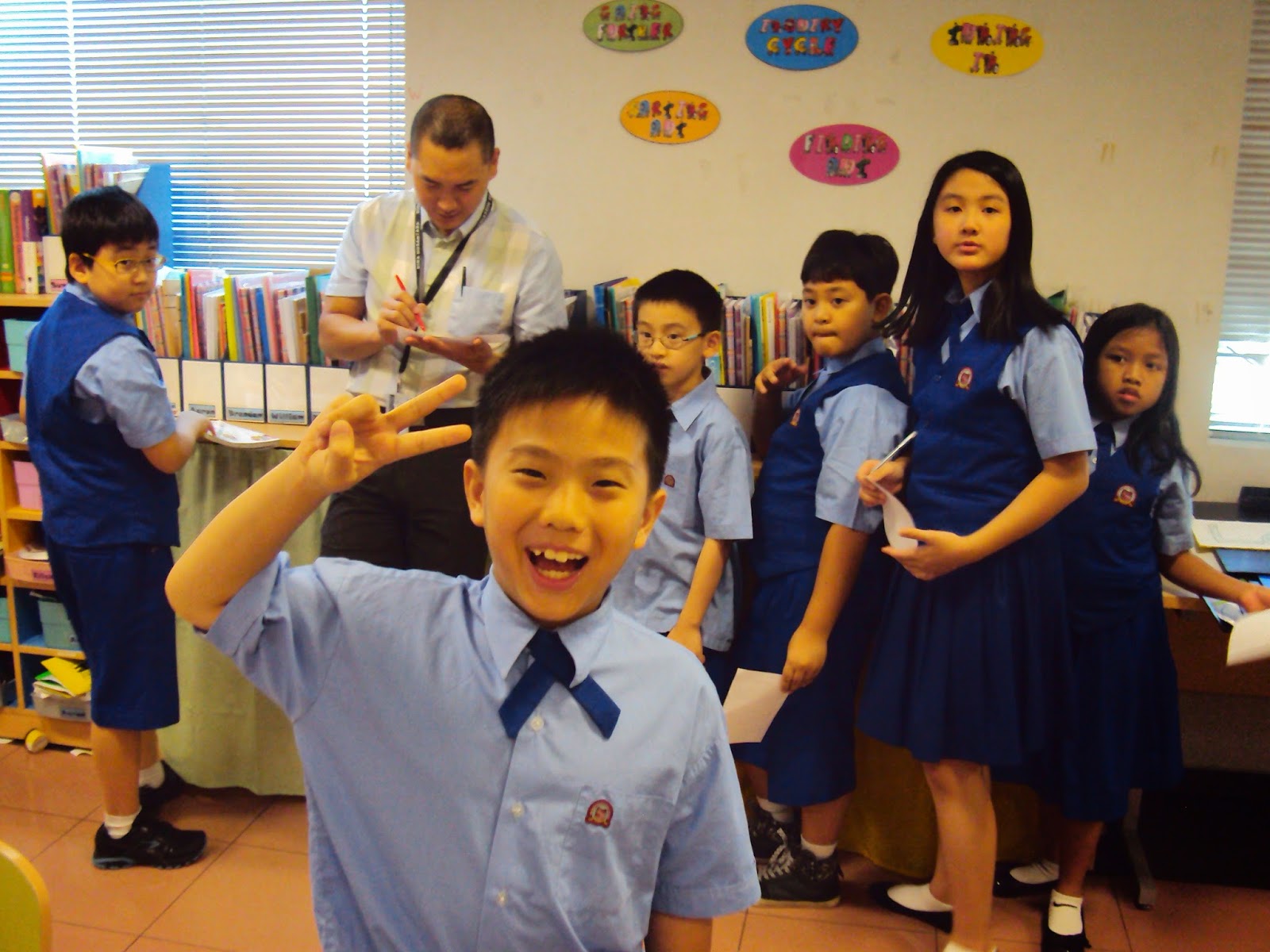This week, I spent my time getting to know the first grade and EY1 classes. Once again, EY means Early Years. EY1 is 3-4 year olds, EY2 is 4-5 year olds and EY3 is 5-6 year olds. Each EY level goes to school for a half day. From my observations I have found that EY1 is the equivalent of our pre-school and EY2+3 is the equivalent of kindergarten. In EY2, the students start learning letters, letter sounds, and putting those together to start reading. More about EY2 will be written later because that is my placement for week 3.
Anyway, I only spent two days in 1st grade this week because the head teacher for EY1 was sick with typhoid fever and Ms. Richel, PYP Coordinator, asked me to help co-teach for the rest of the week in EY1 to help fill the absence of their head teacher.
The exposure to letters, and letter sounds in EY2 makes a tremendous difference in the development of BINUS students reading and writing capabilities. The first grade students I observed read and wrote paragraphs with out diffuculties. In fact, the first day I observed in their classroom they were finishing up writing their own books and got to share their books with friends in the classroom. Amazement is an understatement of how I felt when I saw some of these children's books. According to the 6-Trait Assessment for Beginning Writers, the writing I saw was experienced. I will post pictures of students books at a later date as I did not expect to leave the classroom so quickly and did not get a chance to take pictures of the student work. As I was praising the teacher on how well her students wrote, she was very humble and modestly replied, "Well, it did take a long long time to get the books written!"
On my second day the students were given their summative task, which was to combine multiple simple machines to make a compound machine. Before the task was given, homework was given to help boost ideas on what to do without the students realizing it. One side of the home work was a table for students to fill in with example of simple machines from home. The other side was a mind map where students filled in ideas of compound machines they would like to make. Little did they know this would turn into their summative task. The next day, Ms. Stephanie paired up students with their summative tasks partners. Their first task was to discuss the ideas they wrote down from their homework, then they were to decide what they wanted to create for the summative task. I was not present for the actual construction of the compound machines but I did come back to the classroom to see some creations.
Here is a sketch of what a group wants to make with a list of materials, and description of the machine.
An actual creation of another groups vision.
Bulletin board from the unit.
Little notes like this are hung about the 1st grade wing. All of them are objects that pertain to the students.


These are creations from Bajasa Indonesia (bajasa means languague, so language of Indonesia). They first drew the imagery then created it with play dough. The big idea was to make a land form that can be found in Indonesia. Both of these creations are mountains. The one on the right is a city with road ways built around a mountain, and the one on the left is a similar idea- a mountain with a road and bridge connected to it.
 This is the song the 1st graders are learning for their music program. Below is a video of them practicing.
This is the song the 1st graders are learning for their music program. Below is a video of them practicing.
Here the students are learning about common nouns and proper nouns. If you look closely the two columns correlate. In the common noun common there is car-> a proper noun of a car would be the brand Jeep and so on for the rest of the list.
With regards to EY1, I was there for three days and we mainly played educational games and sang songs. They have routine songs to begin their class such as:
The class was in limbo between units and the teachers has not yet planned the next unit before the absence of the head teacher. The relationship between co-teacher and teacher really is not a "co-teaching" relationship like in America. The co-teacher is really a helper who makes copies, and does various other things to help the head teacher who plans the lessons. My job was to step in and help plan so I helped plan some activities that were meaningful to the students to soak up time while the head teacher was gone.
They made jelly fish to practice there fine motor skills by cutting. She made a mommy and baby jelly fish :)
Here are the EY1 kids before the practiced their song and dance for the music concert. They are doing their version of "Tiger" by Katy Perry.
Above is Ms. Endah, the co-teacher, and then the lady in the far back is a helper lady. She always helps with odd ends for the teacher and class too. It seems like she is the nanny for the class because she is responsible for cleaning the class, preparing random things for lesson/classroom, helps take care of the kids by cleaning them up, taking them to the bathroom, and other nannyish type things.











































